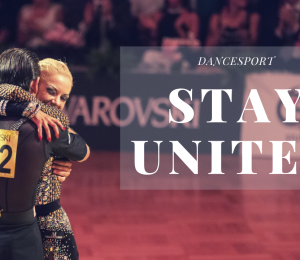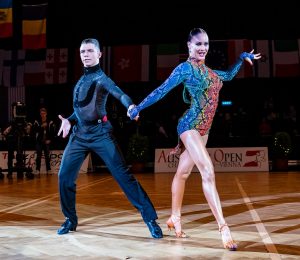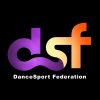During the difficult times of the Coronavirus worldwide epidemic, Igor Golovach & Alessandro Scalora decided to take the time to unite people from all over the world of the beautiful DanceSport industry. Instructors, choreographers, and dancers alike joined us to share their thoughts on staying strong and positive during this global crisis, sharing their advice on fighting on and not losing hope, sending their messages of support and aspiration. Thus, the project of DanceSport - Stay United was formed.
Contradanza is a 19th-century Cuban salon and popular dance and music genre often mistaken abroad as habanera, but which denotes Havana-style contradanza in addition to an earlier style of contradanza: namely, a Spanish line dance popular in the 18th and early 19th centuries thought to come from an older English "country dance" (thus the Spanish corruption of the name). It was Franco-Haitian slaves seeking refuge in Oriente in the 1790s, however, not the Spanish, who introduced the genre to island, in the form of the French contredanse.
Although rhythmically tame by contemporary Afro-Cuban standards, the contradanza was scandalously syncopated for its time because it represented one of the earliest obvious entrances of African rhythm into Cuban music salons which had until then been a venue for strictly European forms like waltzes, quadrilles and schottisches. Previously, European instruments, melodies and harmonies had worked their way into the musical practices of Cuban slaves, but no such reversal of musical influence had been so strong until the appearance of the contradanza.
While the Cuban contradanza was well-established by the turn of the 19th century, the earliest surviving example is "San Pascual Bailón," which dates from 1803.
West Coast Swing as a synonym for "Western swing" appears in a 1961 dance book, and was used in an advertisement by Skippy Blair in 1962 but wasn't incorporated into mainstream swing circles until the late 1960s. Blair credits Jim Bannister, editor of the Herald American newspaper in Downey, California, for suggesting the name "West Coast Swing".
is a social .
The City DanceSport Challenge is an annual NDCA sanctioned DanceSport competition held at the Altman Building in New York City since 2011, organized by Paul Holmes and Jamie Nyemchek.
Choreography is the art or practice of designing sequences of movements of physical bodies (or their depictions) in which motion, form, or both are specified. It is the act of designing dance.
The Cha Cha Cha originated in Cuba in the early 1950s and refers to a style of ballroom dancing included in DanceSport categories of competition. The Cha Cha Cha can be danced in either the International Latin Style or the American Rhythm Style. In addition, this dance style is derived from the Rumba and the Mambo.
The Caucasus Cup is a sanctioned 3-day Georgian National DanceSport Federation competition, recognized by the World DanceSport Federation(WDSF). Hosted in Tbilisi, Georgia by (GNDSF) team, Presindent: George Gachechiladze and vice President: Vano Kandelaki. The 2018 Caucasus Cup includes various WDSF sanctioned events such as the WDSF World Open, (Standard and Latin), WDSF events for PD, Senior 1, Youth, Juniors and also WDSF World Under 21 Latin Championship.
The following lists Professional and Amateur International Style Latin and Standard Champions of the World DanceSport Federation (WDSF).
The Youth Division of DanceSport is a competitive division of Ballroom Dancing. Youth category competing in "International Style Latin", "Standard" and 10 Dance. Youth: Reach 16th- 18th birthday in the calendar year. Youth II, also known as a Under 21 category.
Zdenek Fencak is a former Professional Ballroom dancer specializing in both the Standard and Latin dance styles. Zdenek has represented two countries during his competitive career - Austria and the Czech Republic. Currently, with wife and partner Jana Fencak, he is the owner of the Starstep Dance Studio located in Třebíč, Czech Republic, where he trains National Champions of various age groups. Aside from being a National Adjudicator of the Czech Dance Sport Federation, he is also an "A" and "PD" Licensed WDSF Adjudicator.









